Using the API for a POS/ERP
When you integrate your system as POS/ERP, you establish a direct connection with the Neomode platform to:
Below, we explain step-by-step how each integration stage works.
- Publish and keep the product catalog updated (categories, products, and SKUs).
- Send price and stock updates asynchronously.
- Manage orders received from connected channels — from retrieval to invoicing and tracking.
📦Catalog Integration Flow
Catalog updates must be submitted in batches and will be processed asynchronously.
1. Register the category tree
The category structure is hierarchical and should be created level by level.
- With a valid token – Authenticate
- Send the first level of the category tree asynchronously – PUT Upsert Batch Categories
- Retrieve the ID of the created category searching by your
code– GET Category - Send the second level, using the
parentIdof the upper-level category asynchronously – PUT Upsert Batch Categories
Send Top-Level Categories
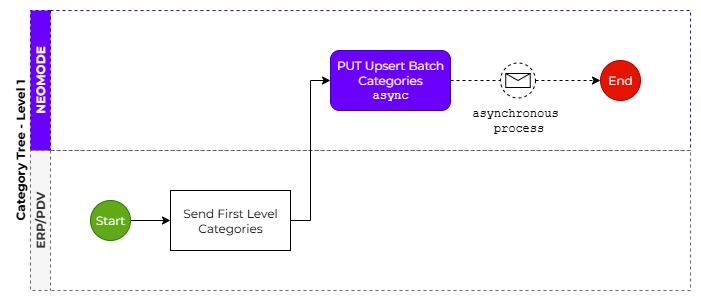
Send Other Level Categories

🔗 More details about category hierarchy
You can link categories to a product by batch sending the list of categories id - PUT Upsert Product Categories
2. Send Products and SKUs
The submission should be done in batch with the complete set (product and SKUs).
- Whit a valid token – Authenticate
- Send products and SKUs asynchronously – PUT Upsert Batch Products
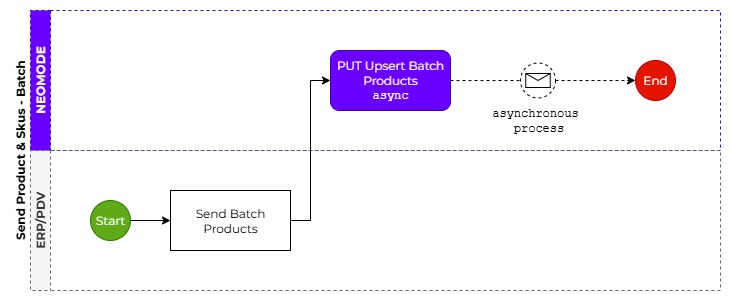
🔗 More details about Product and SKU Catalog
3. Send Price Updates
Price updates must be sent in batches and are processed asynchronously.
- Whit a valid token – Authenticate
- Send prices asynchronously – PUT Upsert Batch Prices
It is important to set the Match Codes via query parameters for data persistence to occur successfully.
Stocks Batch query parameter options:
- ProcuctMatchCode:
code,auxCode,referenceCode,id- SellerMatchCode:
cnpj,pointsaleid,id
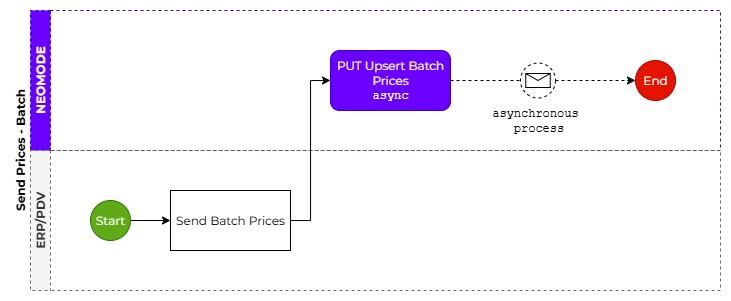
4. Send Stock Updates
Stock updates must be sent in batches and are processed asynchronously.
- Whit a valid token – Authenticate
- Send stocks asynchronously – PUT Upsert Batch Stocks
It is important to set the Match Codes via query parameters for data persistence to occur successfully.
Stocks Batch query parameter options:
- SkuMatchCode:
code,auxCode,barcode- SellerMatchCode:
cnpj,pointsaleid,id
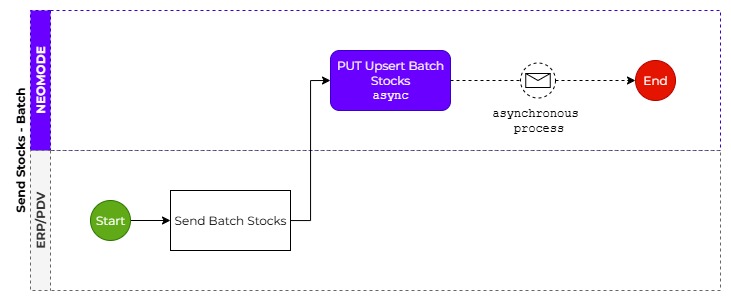
🏪Order Integration Flow
After confirmation of order captured by ERP/POS, progress must be notified
1. Search for New Orders
Fetch orders placed on connected channels, including customer, product, payment, and delivery information. Notify the channel that the order has been received and is being processed.
- Whit a valid token – Authenticate
- Fetch orders
- with status
2(PendingCreate) by store and date range – GET Orders By Seller - with status
6(Separated) – GET Orders By Seller
- with status
The ERP must query orders by store (defined in the path parameter) at intervals defined by query parameters.
Order Status
Status
2(PendingCreate) always represents paid & unpackaged orders.Status
6(Separated) represents only paid & packaged orders.You can configure the system to display newly created unpaid orders on status
2(PendingCreate).
2. Confirm Order Picking
- Whit a valid token – Authenticate
- Insert the ERP order identifier as
sellerOrderId– PUT SellerOrderId - Send status
4(ApprovedExternal) – PUT Status by SellerOrderId
Steps 1 and 2 are usually done together

3. Send Invoice Data
Submit electronic invoice (NF-e) details.
- Whit a valid token – Authenticate
- Submit invoice data using
order.id– PUT Order Invoice by Guid Id
You can either send the hosted document URL or the full document encoded in Base64.
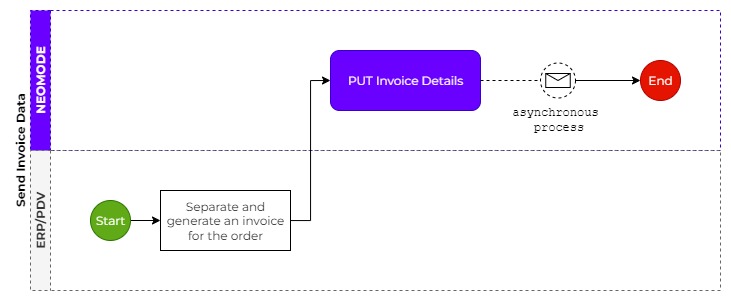
4. Send Delivery Information
Update the delivery status and send the tracking code and carrier information.
- Whit a valid token – Authenticate
- Submit delivery data using
order.id– PUT Tracking By Id - Send status '7' (InDelivery) – PUT Status by SellerOrderId
Automatic Tracking Management System
If the project is connected to a Transportation Management System (TMS), you do not need to manually update the order to status
7(InDelivery).The integration with NEO In Store will handle this automatically.
5. Finalize Order
- Whit a valid token – Authenticate
- Send status
9(Finalized) – PUT Status by SellerOrderId
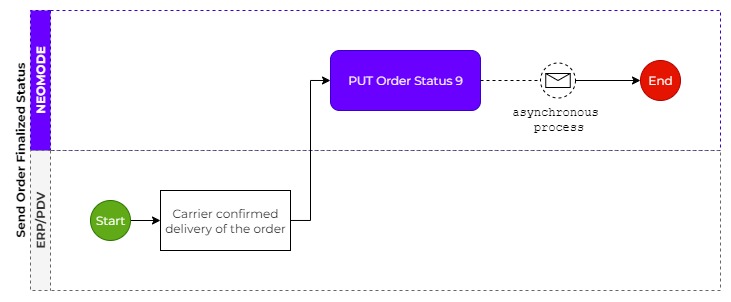
Order Exceptions
Order Error Case
- Whit a valid token – Authenticate
- Send status
19(Error) withmessageinside Body - PUT Status by SellerOrderId
Admin Dashboard Operation
This route will make the order with the error visible to NEO Store Dashboard operators.
You should remove the order from this status once the issue is resolved. Send a new status.
Order Decline Case
- Whit a valid token – Authenticate
- Send status
11(CanceledBySeller) withcancelReasoninside Body - PUT Status by SellerOrderId
Change Seller - Cancelation Decision
If ChangeSeller Feature is Active, and cancelated order will be moved to status
22(AwaitingCancelationDecision) on NEO In Store Dashboard.
